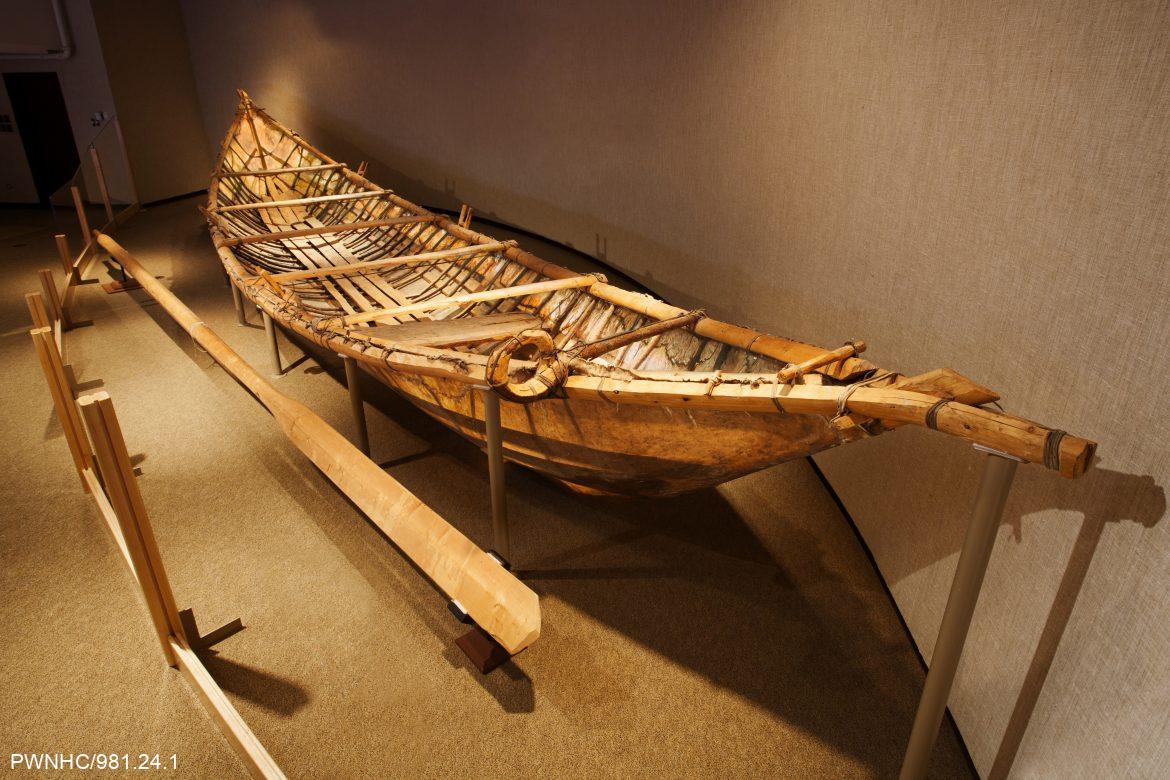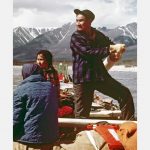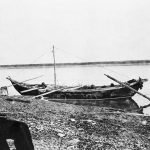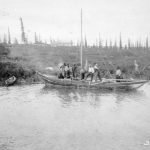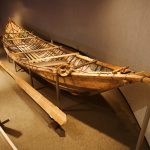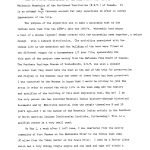1981
The Mooseskin Boat Project
With the 19th century arrival of fur traders in the Mackenzie valley, the lives of the Shuhtaot’ine or Mountain Dene changed dramatically. The fur trading posts of Tulita (Fort Norman), Fort Good Hope, Fort Simpson, and Fort Liard became more central to their lives. From the late 19th century to the 1950s, the Mountain Dene would travel each year down from the Mackenzie Mountains to these trading posts in large mooseskin boats.
It has been suggested that the Shuhtaot’ine created this new boat technology by adapting the basic design of the fur traders’ York boats to produce a craft that suited the conditions of mountain rivers. The mooseskin boats typically measured 14 metres (46 feet) and were created with materials from the land. They were constructed with a spruce wood frame, and a covering of raw moose hides sewn together with sinew.
These large boats were made early each summer, high in the mountains at the winter encampments. The boats would then transport people, dogs, meat, furs, and other goods down the fast-flowing mountain rivers to the Mackenzie and then to the trading posts.
Designed as temporary craft, the boats were dismantled after their journey. The moose hides used in the boats were then tanned and used for clothing and other items. By the 1950s, the mooseskin boat had virtually disappeared from the material culture of the Mountain Dene, and only a few Elders knew how to make them.
In 1981, Raymond Yakeleya of the Native Communications Society approached Gabe Etchinelle of Tulita with an idea to create a mooseskin boat and document the process on film. The GNWT Department of Information, the Prince of Wales Northern Heritage Centre, and the National Film Board of Canada committed funds towards the project.
Elders from Tulita and Délı̨nę led by Gabe Etchinelle were commissioned to build a boat. Filmmakers Raymond Yakeleya and Bill Stewart documented the boat’s construction, life activities in the bush camp, and the boat’s journey from the headwaters of the Keele River to Fort Norman, resulting in the 1981 NFB documentary “The Last Mooseskin Boat.”
In return for its contributions to the project, the Prince of Wales Northern Heritage Centre received the finished boat for its permanent collection. After a year-long acclimatization and treatment, the boat was brought from its storage to an environmentally controlled gallery at the Heritage Centre, where it remains on display.
Despite the name of the 1981 documentary, traditional mooseskin boat-building projects have continued in the Dehcho and the Sahtu regions. In 2008 a boat was built in Tulita, and in 2018 a boat was launched on the Nahanni River as a reconciliation activity to connect, heal, and inspire all who participated.
